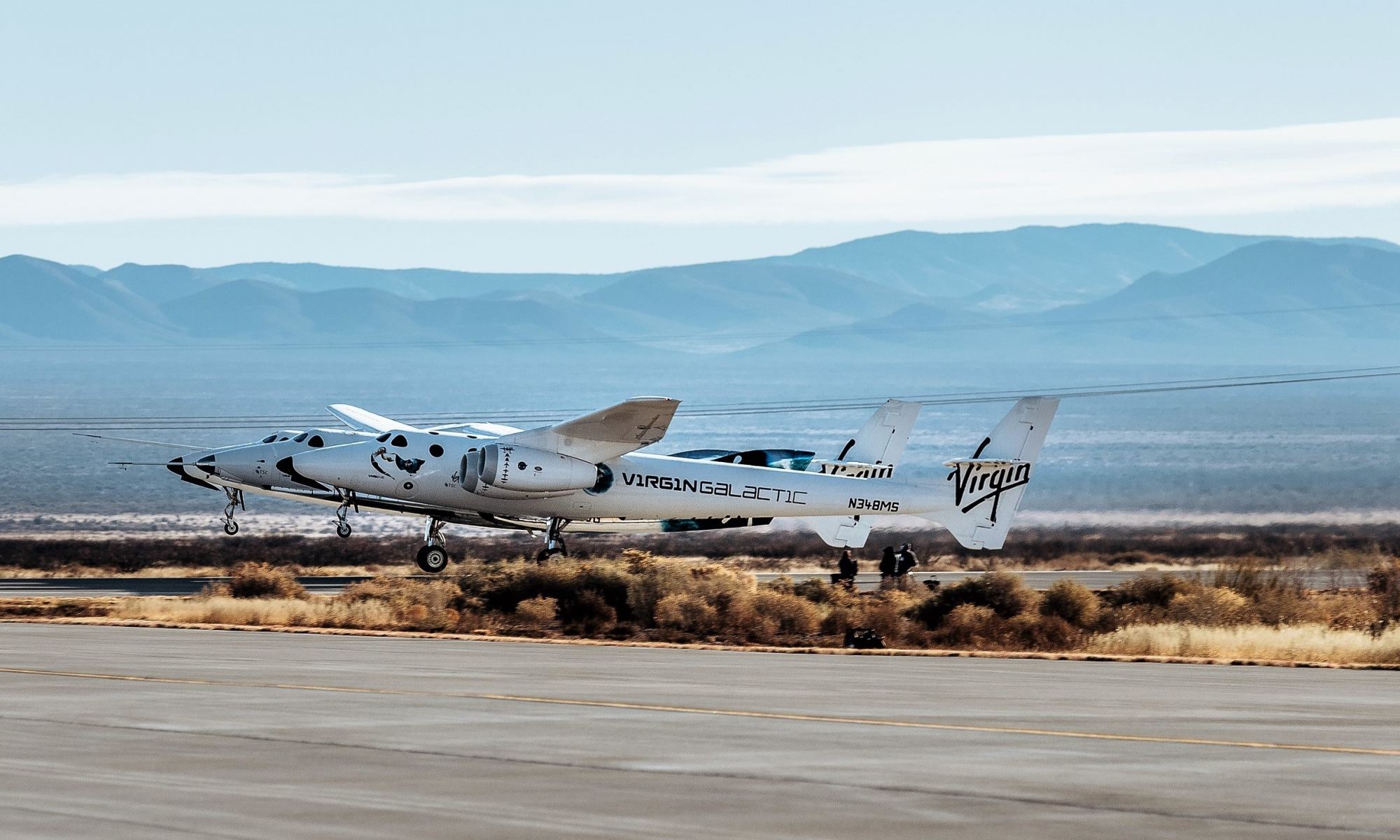Virgin Galactic lit up SpaceShipTwo’s rocket motor for the first time in the skies over New Mexico today, but only for an instant before the engine shut down and the plane glided back to a safe landing at Spaceport America.
The flight test team had hoped that the SpaceShipTwo craft known as VSS Unity might make it all the way to the 50-mile space milestone with two test pilots at the controls. Unity has made it that high up twice before, in 2018 and 2019, when the test operation was based at Mojave Air and Space Port in California — but this was the first powered test flight planned since operations moved to Spaceport America.
Today’s outing followed up on two glide tests conducted in May and June of this year. All appeared normal during the flight’s early phases. VSS Unity was carried into the air by its twin-fuselage mothership, known as WhiteKnightTwo VMS Eve, and was released to fly free at an altitude of more than 40,000 feet.
A webcast provided via NASASpaceflight.com showed the flash of the plane’s hybrid rocket motor lighting up, but only for a second.
After the flame-out, Test pilots Dave Mackay and C.J. Sturckow brought Unity back down to the spaceport for a gliding landing.
“The ignition sequence for the rocket motor did not complete,” Virgin Galactic explained in a post-landing tweet. “Vehicle and crew are in great shape. We have several motors ready at Spaceport America. We will check the vehicle and be back to flight soon.”
Virgin Galactic CEO Michael Colglazier provided further detail in a statement released later in the day:
“Today’s flight landed beautifully, with pilots, planes, and spaceship safe, secure and in excellent shape — the foundation of every successful mission!
“Our flight today did not reach space as we had been planning. After being released from its mothership, the spaceship’s onboard computer that monitors the rocket motor lost connection. As designed, this triggered a fail-safe scenario that intentionally halted ignition of the rocket motor. Following this occurrence, our pilots flew back to Spaceport America and landed gracefully as usual.
“When I became CEO, I was briefed on the safety engineering of our spaceflight system, which is purposely designed to enable our pilots to safely glide back to the spaceport at any point during the flight profile. Seeing firsthand how our pilots brought Unity in for a picture-perfect landing after an off-nominal condition confirmed this approach. I am even more confident that this is the level of safety that consumers will want and will be expecting from us.
“As we do with every test flight, we are evaluating all the data, including the root cause assessment of the computer communication loss. We look forward to sharing information on our next flight window in the near future.”
When 2020 began, Virgin Galactic had hoped to start flying paying passengers by the end of the year. Hundreds of customers have paid as much as $250,000 each for a ticket to zoom above 50 miles (80 kilometers) in altitude, experience a few minutes of weightlessness and see the curving Earth beneath the black sky of space.
The COVID-19 pandemic put a crimp in that schedule. Now Virgin Galactic is targeting 2021 for the start of commercial operations — with the company’s billionaire founder, Richard Branson, taking a high-profile ride.
In addition to flying people, SpaceShipTwo has been flying scientific payloads for a NASA-supported suborbital space research program. Multiple payloads were packed aboard VSS Unity for today’s test flight, but it’s unlikely that the scientific experiments got the required dose of microgravity.
Virgin Galactic isn’t the only billionaire-backed venture aiming to take passengers on suborbital space trips. Amazon CEO Jeff Bezos’ Blue Origin space venture is working on its own suborbital launch system called New Shepard. That system has gone through 13 uncrewed flight tests over the course of five years.
Like Virgin Galactic’s SpaceShipTwo, Blue Origin’s New Shepard is flying science experiments. And like Virgin Galactic, Blue Origin has had to delay its plans for passenger trips, in part due to COVID-19 challenges.
But unlike Blue Origin, which is privately backed by Bezos, Virgin Galactic has been a publicly traded company since last year. That might be providing extra motivation for the SpaceShipTwo team to complete the test program and transition to fully commercial operations.
Several Twitter users took note of the financial angle. “You made us 30% poorer today, but good to hear everyone is safe,” one wrote. Another urged Virgin Galactic to move on quickly to the next test flight: “Please do it tomorrow! I can’t take the Monday selloff.”
Lead image: Virgin Galactic’s mothership, WhiteKnightTwo Eve, carries SpaceShipTwo Unity into the air from New Mexico’s Spaceport America for a flight test. Credit: Virgin Galactic

